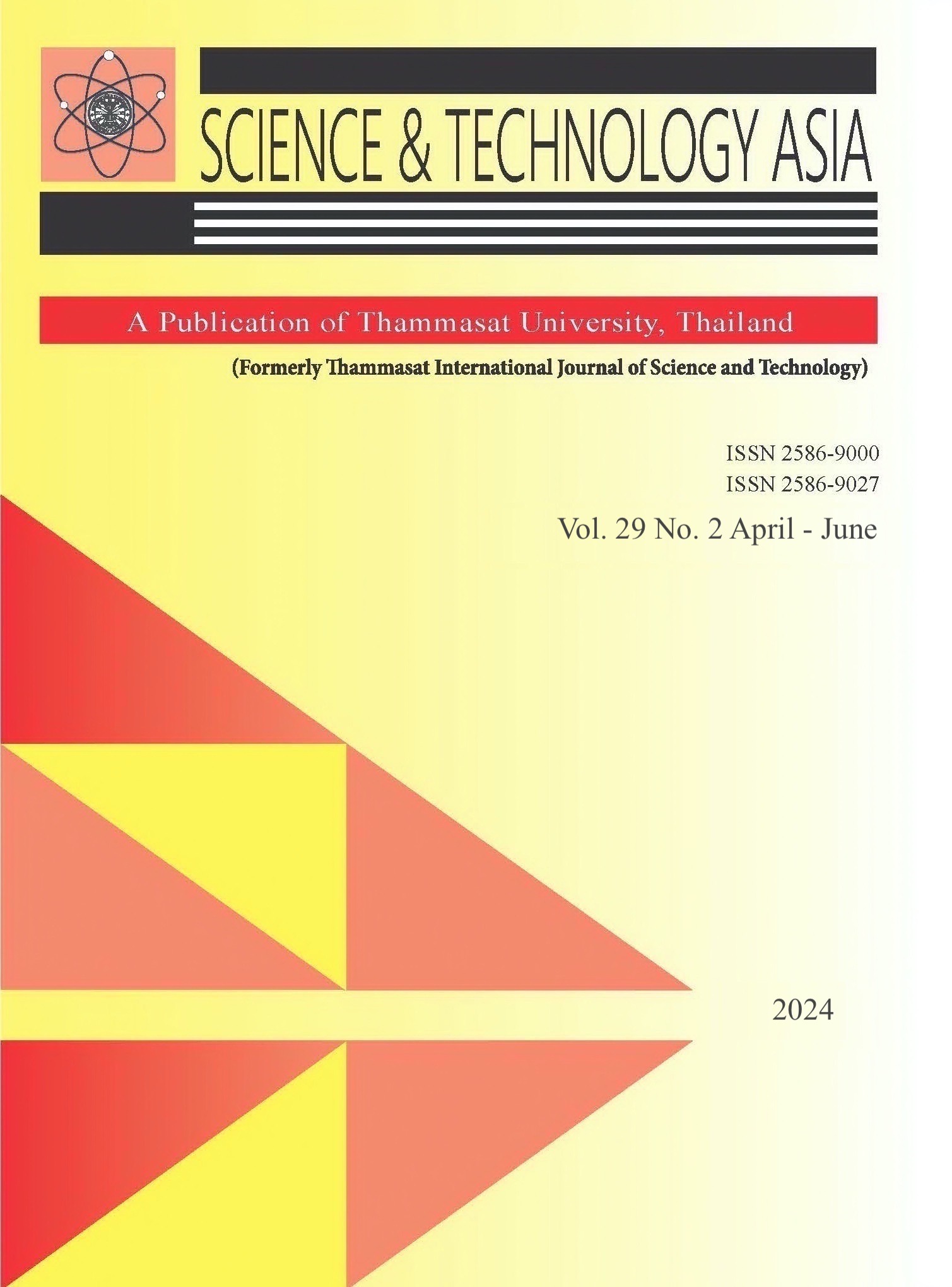An Integrated Approach for Designing Healthcare Facilities with a Location-Inventory Model
Main Article Content
Abstract
Getting services at public hospitals in Thailand requires outpatients to visit doctors and receive medicines and medical supplies at the dispensary as the final step of the treatment process. This often leads to congestion issues in hospitals. Therefore, the workload should be distributed outside the hospital to alleviate congestion. Presently, outpatients of public hospitals can participate in the “Taking Medicine Nearby House” project to increase convenience and relieve congestion in the hospital. This study addresses the Location Inventory (LIP) problem, specifically focusing on “pharmacies,” by determining the optimal number and locations to meet patient needs. This approach aims to increase patients' accessibility. Additionally, the right inventory level for each pharmacy must be considered to reduce operating costs. Therefore, a mathematical model is developed to simultaneously solve the location and inventory problems using an exact method. The model is processed using the Lingo program to facilitate efficient problem-solving. This study benefits congestion mitigation in public hospitals and ensures greater patient access and proper pharmacy inventory management by the integrated solution. The results in actual implementation within the healthcare system will improve operational efficiency and raise the standard of patient care.
Article Details

This work is licensed under a Creative Commons Attribution-NonCommercial-NoDerivatives 4.0 International License.
References
Matichon online. (2021). Illness and Receiving Medical Care in Government Hospitals. Available from: https://-
shorturl.asia/a2EjU
Suwatcharachaitiwong S, Sirivongpaisal N, Hangsapruek P. (2023). Designing a drug and medical supply service system for patients who come to receive medicine at Drugstore Type 1 in Hat Yai District, Songkhla. Prince of Songkla University.
National Health Security Office. (2020). Proposal for NHSO Guidelines for Reducing Congestion in Hospitals for Service System Development under the National Health Insurance System. Available from: https://shorturl.asia/-HMr56
Hfocus team. (2021). NHSO reveals that the project to obtain medicine close to home has exceeded the target of reducing congestion in hospitals by 10-20%. Available from: https://shorturl.asia/-zaTSx
Health Care Industry Market Research. Available from: https://shorturl.asia/-ThE4c
Suwatcharachaitiwong S, Lin C.C, Huang, W, Hung L.P. On the medication distribution system for home health care through convenience stores, lockers, and home delivery. Health informatics journal. 2020;26(4):3163-83.
Srizongkhram S, Chiadamrong N, Shirahada K. Optimal Medical Inventory Policies for Medical Storage: A Case Study of a Medium Sized Hospital in Thailand. Science & Technology Asia, 2021;107-26.
Shang X, Zhang G, Jia B, Almanaseer M. The healthcare supply location-inventoryrouting problem: A robust approach. Transportation Research Part E: Logistics and Transportation Review. 2022;158:102588.
Kaur P, Priya A. Selection of inventory policy under pythagorean fuzzy environment. Science & Technology Asia. 2020:62-71.
Kelle P, Woosley J, Schneider H. Pharmaceutical supply chain specifics and inventory solutions for a hospital case. Operations Research for Health Care. 2012;1(2-3): 54-63.
Farahani R.Z, Rashidi Bajgan H, Fahimnia B, Kaviani M. Location-inventory problem in supply chains: a modelling review. International Journal of Production Research. 2015;53(12):3769-88.
Jayaraman V. “Transportation, Facility Location and Inventory Issues in Distribution Network Design: An Investigation”. International Journal of Operations & Production Management.1998;18(5):471-94.
Firoozi Z, S.H. Tang Sh Ariafar, M.K.A. M. Ariffin. “An Optimization Approach for a Joint Location Inventory Model Considering Quantity Discount Policy.” Arabian Journal for Science and Engineering. 2013;38(4):983-91.
Amiri-Aref M, Klibi W, Babai M.Z. The multi-sourcing location inventory problem with stochastic demand. European Journal of Operational Research. 2018;266(1):72-87.
Sourirajan K, L. Ozsen, R. Uzsoy. “A Single-product Network Design Model with Lead Time and Safety Stock Considerations.” IIE Transactions 2007;39(5):411-24.
Yang L, C.T. Ng, T.C.E. Cheng. “Evaluating the Effects of Distribution Centres 0on the Performance of Vendor managed Inventory Systems.” European Journal of.Operational Research 2010;201(1) 112-22.
Schmitt A. J. “Strategies for Customer Service Level Protection under Multi Echelon Supply Chain Disruption Risk.” Transportation Research Part B: Methodological. 2011;45(8):1266-83.
Nozick L.K, M.A. Turnquist.“Integrating Inventory Impacts into a Fixed-charge Model for Locating Distribution Centers.” Transportation Research Part E: Logistics and Transportation Review 1998;34(3):173-86.
Shen Z.J.M, Coullard C, Daskin M.S. A joint location inventory model. Transportation science. 2003;37(1):40-55.
Snyder L.V, Daskin M.S, Teo C.P. The stochastic location model with risk pooling. European Journal of Operational Research. 2007;179(3):1221-38.
Rashid R, Hoseini S.F, Gholamian M.R, Feizabadi M. Application of queuing theory in production inventory optimization. Journal of Industrial Engineering International. 2015;11:485-94.
Erlebacher S.J, Meller R.D. The interaction of location and inventory in designing distribution systems. Iie Transactions. 2000;32(2):155-66.


